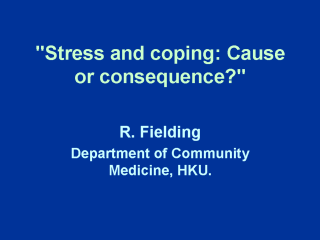| front |1 |2 |3 |4 |5 |6 |7
|8 |9 |10 |11 |12 |13 |review |
 |
“Stress” is a
much misused word. In engineering terms it refers to a force applied to a structure, such
as a bridge or joint, material like concrete or bone, that can cause some change (strain,
cracking, “failure”) in the integrity of that structure or material. This same
conceptual model was imported into physiological concepts of stress (heat, cold,
starvation, or dehydration places a strain on homeostatic systems, which when they fail
lead to rapid systems collapse and death). This suggests stress is like some strange force
lurking in the outside world. However, on a less dramatic but equally important level, stress is often blamed for accidents or mistakes by doctors who have to work long hours, for example. As students you experience “stress” around exam time. You may feel tense, you may withdraw from social interaction, you may drink alcohol, you may study more intensely, you may have change to your appetite, you may have difficulty going to sleep, your memory may be less efficient, you may become irritable or easily upset. But what is the mysterious force in this example? And what strain is it applying, and where? Is this stress-strain model a true picture of what really happens? This lecture questions the validity of this model and explores some of the basic concepts crucial to understanding of the most current models of stress. |